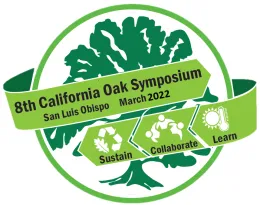#41

Determining the Long-Term Effects of Wildfire on Goldspotted Oak Borer in Southern California
Kim Corella, Forest Pest Specialist, California Department of Forestry and Fire Protection
Cheyenne Borello, Forester I, California Department of Forestry and Fire Protection
David Haas, Forester I, California Department of Forestry and Fire Protection
Carol Williams, Environmental Scientist, California Department of Forestry and Fire Protection
Adrian Poloni, Forestry Technician, Inland Urban Empire Resource Conservation District
Alex Chacon, Forest Health Specialist, Inland Urban Empire Resource Conservation District
Stacy Hishinuma, Forest Entomologist, Forest Service, Forest Health Protection
The goldspotted oak borer (GSOB), Agrilus auroguttatus Schaeffer, is an invasive flatheaded wood borer that infests and kills California black oak (Quercus kelloggii Newberry) and coast live oak (Quercus agrifolia Née) trees in Southern California. Since its introduction from southeastern Arizona into San Diego County in the late 1990s, GSOB has spread into four additional counties: Riverside, Orange, Los Angeles, and San Bernardino. GSOB’s impact on forest stands is significant because of the beetle’s preference for large, mature oaks. In areas of San Diego where GSOB has been present for over 10 years, tree mortality has reached 90%. Tree mortality can be reduced in localized areas where active GSOB management occurs, but in wildland areas there are no direct management options. Studies are underway to examine how current forest vegetation management practices may reduce the progression of GSOB infestation however no data exists on the impacts of wildfire on GSOB. Recent studies of future fire regimes have shown that climate change will have a substantial impact and suggests that there will be an increase in burned area and fire occurrence. In order to characterize the long-term effects of wildfire on GSOB-infested stands and GSOB populations within those stands, forest inventory plots were established in or surrounding two recent wildfires. The Valley Fire in San Diego County (16,390 acres) and El Dorado fire in San Bernardino County (22,744 acres) burned through GSOB-infested areas. Within or near the footprint of those two fires, 19 x 1/5-acre plots were established in GSOB-infested burned areas and 9 x 1/5-acre plots were established in GSOB-infested stands that were not burned. Forest stand conditions, tree mortality, degree of tree injury associated with wildfire severity, and severity of GSOB-infestation were recorded in each plot. Preliminary findings of this research will be discussed.
